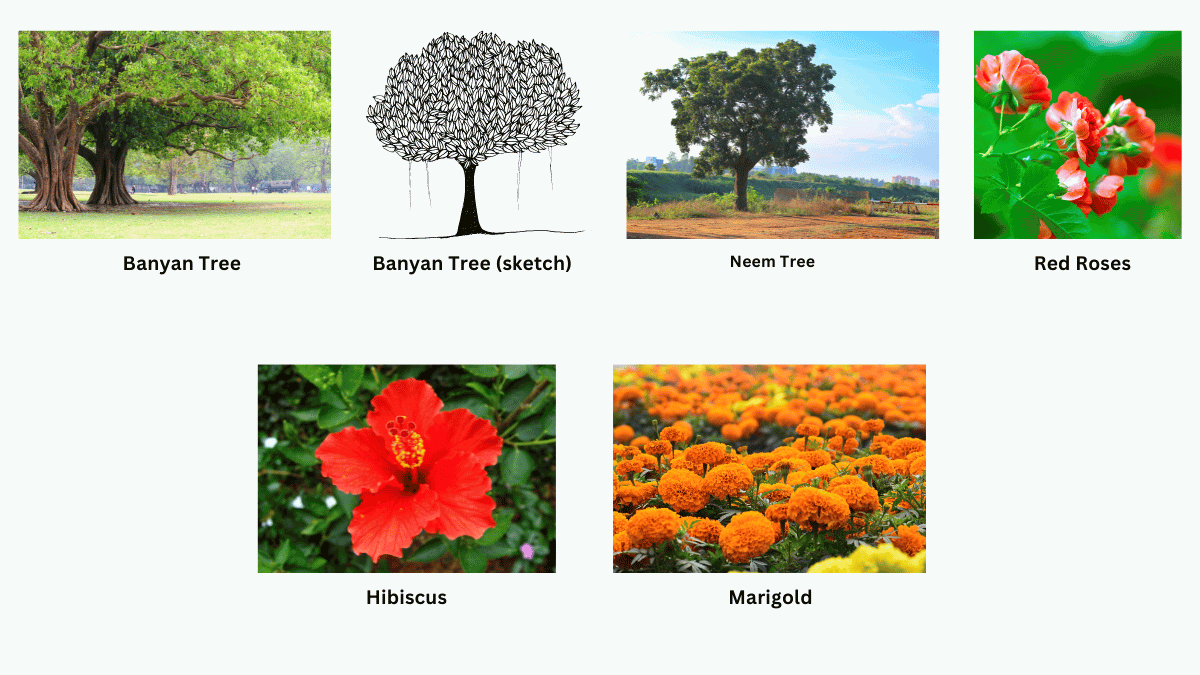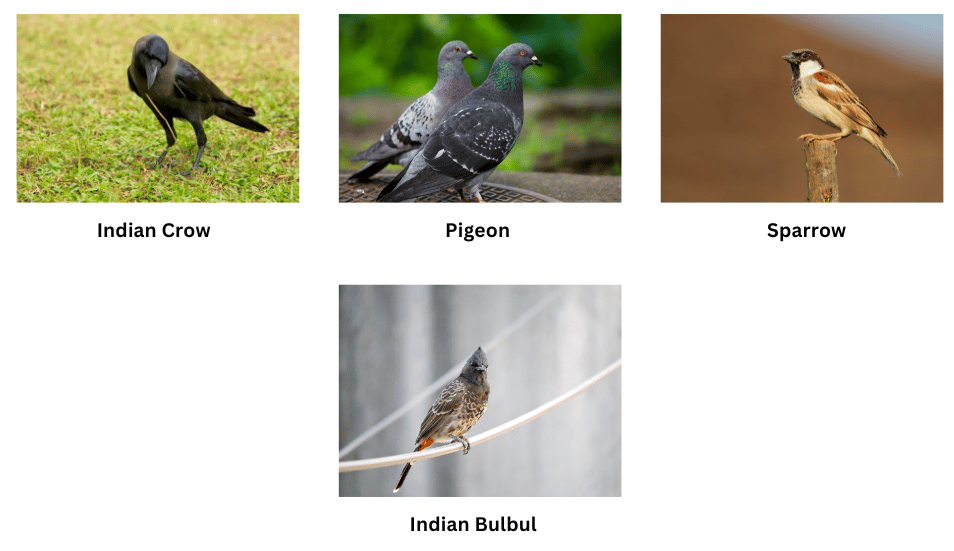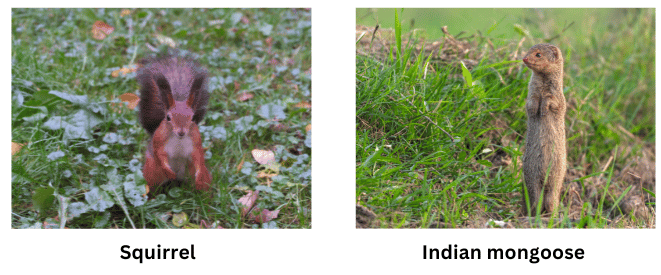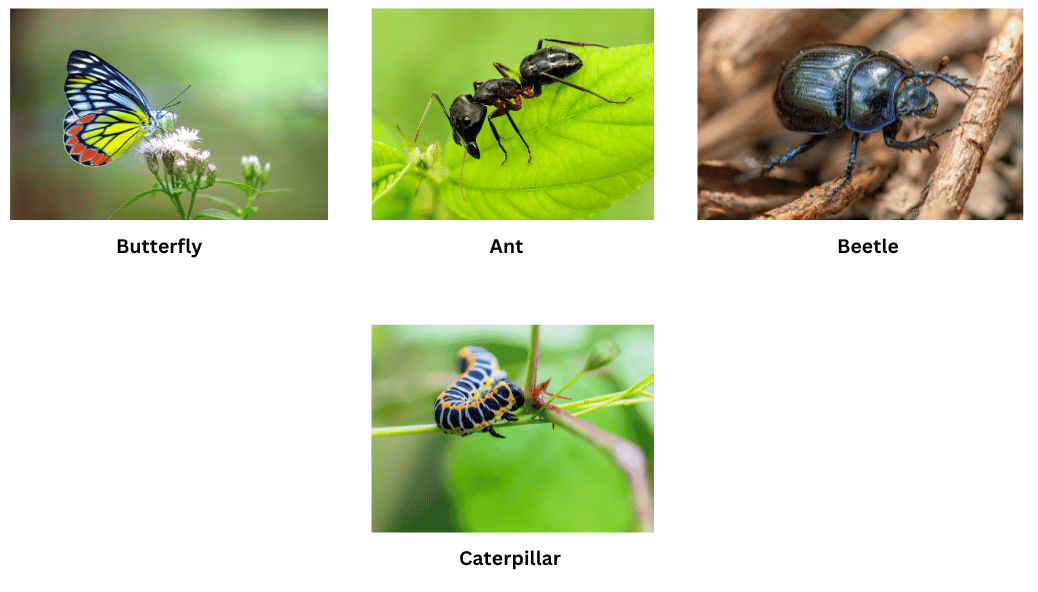4. Study the biodiversity of a park nearby. Prepare a detailed report with photographs and sketches of the flora and fauna.
Answer:
I visited a big park several kilometres from where I live and studied the biodiversity. I learnt that plants, animals, birds and insects all play a role in the ecosystem of the park together. I have prepared a comprehensive report with my findings below:
Trees:
The topmost canopy in the park is formed by banyan trees and neem trees.
Banyan Tree: The roots of the banyan tree provide excellent shelter and habitat for many animals, birds and small mammals. The tree is also an excellent food source and is also useful for hiding food. Other plants such as ferns and mosses grow on the aerial roots and branches of the banyan tree. Many birds and insects build their nests in the tall branches of the banyan tree. As you can see, the banyan tree is almost like its own mini forest when it comes to biodiversity.
Neem Tree: The neem tree with its medicinal and insecticidal properties contributes heavily to the ecosystem of the vicinity by repelling pests and attracting beneficial insects and other organisms. Like the banyan tree, many birds build their nests in neem trees. It is also an excellent source of nectar for pollinators like bees and butterflies.
Shrubs:
Rose Shrubs: Apart from bearing attractive and aesthetically pleasant flowers, rose shrubs produce nectar for pollinators like bees and butterflies. Sometimes birds are attracted and feed on these insects, contributing to the food chain.
Hibiscus and Marigold Shrubs: Hibiscus shrubs produce colourful flowers which attract pollinators and birds which feed on them. Some of these insects and birds get their food from the nectar in these flowers.
Grass:
The lowest layer in the park is formed by a bed of grass. Grass prevents erosion by binding the soil and also provide habitat for a variety of insects and microorganisms, contributing to the park’s overall biodiversity.
In general, all the above-mentioned plants produce seeds, which are dispersed by birds, animals and insects. This helps in plant reproduction and contributes hugely to the park’s overall biodiversity.

Birds:
Indian Crow, Pigeons and Sparrows: The Indian crow eats insects and rodents and thereby help to keep their population under control. Sparrows, pigeons and Indian Bulbuls are seeds eaters and thereby help in their dispersal within the park and even outside. All these birds build nests on top of the tall trees in the park to avoid predators.

Mammals:
Squirrel: Squirrels eat nuts, seeds, fruits etc which aids in seed dispersal and also helps to control insect populations. Squirrels live in the hollows of trees, which helps avoid predators and for storage of food.
Indian mongoose: The Indian mongoose feeds on insects, small mammals, reptiles etc and helps keep their population under control. Mongooses live in burrows or hidden spaces, which helps in secure reproduction and contributes to the park’s wildlife diversity.

Insects:
Insects also contribute heavily to the biodiversity of the park. Butterflies suck nectar from flowers and thereby aid in pollination. Ants contribute heavily to soil health by burrowing deep into the soil. This helps in soil aeration and nutrient cycling. Beetles feed on other insects and help keep their population under control. Caterpillars and all the other insects provide food for birds and animals and also help in decomposing organic matter, which helps improve soil fertility.

It is evident that the plants and all other organisms in the park all depend on each other for survival. Therefore, we should not disturb the ecological balance of the park and our forests in general. Instead, we should preserve the biodiversity present in these areas.
“Study the biodiversity of a park nearby. Prepare a detailed report with photographs and sketches of the flora and fauna.” – Solved.
Related Links:
Solution to Extended Learning Problem 1
Solution to Extended Learning Problem 2
Solution to Extended Learning Problem 3
Solution to Extended Learning Problem 4
Solution to Extended Learning Problem 5
Solution to Extended Learning Problem 6
Solution to Extended Learning Problem 7
Solution to Activity 5.1
Solution to Activity 5.2
Solution to Activity 5.3
Solution to Activity 5.4
Solution to Activity 5.5
Solution to Activity 5.6
Solution to Activity 5.7
Solutions to Chapter 5 Conservation of Plants and Animals


